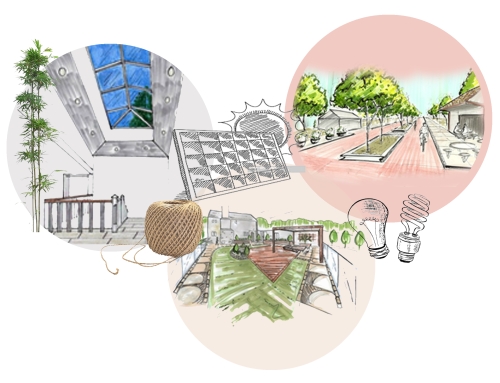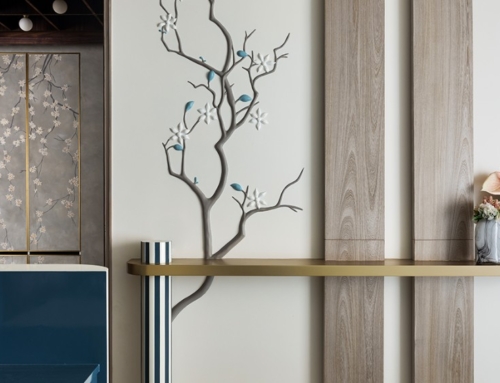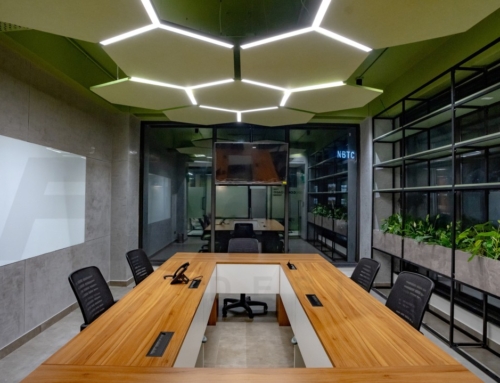
Written by Ar.Shoonya R; Research Associate, FOAID Design Studio
ABSTRACT:
Key words: Primitive architecture, Culture, Identity, Traditional, Vernacular
In the current era of globalization, the idea of cultural rootedness and identity is fading. In our attempt to blur boundaries we have diluted the idea of identity and roots, forgetting the past and focusing on ‘idea of future’ not realizing the damage done to the ‘present’. Primitive architecture provided a platform to discuss, architecture – which evolved from the collective idea of a community living and expressing their beliefs and customs, thus forming a beautiful bond of understanding space through the context of time and materiality. While most of the architecture in the rural areas is primitive and addresses the basic fundamentals of context, climate and community participation, Modern architecture has fractured this very thought and mechanized spaces. What we understand as architecture in the cities, is merely construction and display of technology and human politics to address economic and social growth without any understanding of the “collective”. We live in the cities, dispersed and isolated and enjoy the temporariness of spaces. The idea of collective is dead in these spaces (cities as such), and this paper is an attempt to address the idea of the “collective” through primordial architecture, and also addressing and emphasizing on the making – the process- and evolving through the same.
Culture and tradition are not merely words from the past, but they have always given clues to human civilization to understand the collective to form a society. Very often culture and tradition is symbolized only through the vernacular form of architecture. This paper also attempts to break this notion or at least put up questions which addresses the idea of collective in a non-vernacular sense.
Introduction:
We live in an era where Architecture is labeled and synonym with anything that is ‘built’. Steel, glass and concrete are the most conventional materials and cities today display a plethora of these packed in forms without any genesis of evolution. Most of the buildings in the current era are software generated renders without relation to space, time and context. Architecture today is more commercially driven and dominated by market forces, which label the practice of construction as architecture.
People in the cities have accepted this mediocrity without any questions and architecture has slammed its way to a level where anything and everything is built and stands as an example of progress and development. Not everything built can be labeled as architecture. cities today show us great methods of construction, which is a demonstration of power, politics, and technology. More importantly it shows how standard materials can be arranged and re-arranged in a certain sequence, repeating itself and imitating.
Typologies are mixed to bring things and people together, but in a forced manner to address globalism and monotony allowing a single perspective and giving no room to freedom – freedom to dramatize space. Under the blanket of ‘Modern Architecture’ and Globalization, cities today create a false imagery and dilute the idea of architecture itself. We thrive on a set format to do things which diminishes creativity and end up in quantity. Ironically we don’t use our current resources in an efficient manner resulting in a lack of quantity also, with people still struggling for a basic shelter across the world.
Dominated by the machine, construction today lacks what primitive builders had – the sense of materiality – context – environment – climate – the collective idea of architecture – of the people, by the people and for the people – a true ‘democracy’. While the current milieu in architecture suffers an identity crisis, yet boasts on the global image, primitive architecture subjected itself to the context, which gave it an identity across the globe. History has shown us a variety of examples of primitive architecture. The term primitive architecture does not refer to the builder’s intentions or abilities, but rather to the society in which they build. It is of course a relative term; to future societies we will undoubtedly appear rather primitive. We use Vernacular, anonymous, spontaneous, rural (1), traditional architecture for a generic idea for this kind of an informal architecture. Though vernacular has been clearly defined by the idea of strong cultural presence and community of a more elite existing society compared to the “very fundamental” building of a shelter. Nevertheless, confusion still persists and architects have their own terms and definition’s for what one can specifically call vernacular and traditional and the difference between the two and primitive architecture.
An Overview:
“Man is the measure of all things, of being things that they exist, and of non-entities that they do not exist.”
Protagoras (C.481-411 B.C.)
The need for shelter is basic to man. Through the centuries, man has created his habitat through an intuitive and instinctive process and we must try to understand not only the buildings and the community spaces that lie between them, but also the underlying deep- structure that has generated this habitat (2). Primitive building most simply refers to that produced by societies defined as primitive by anthropologists. It refers largely to certain technological as well as economical levels of development and includes aspects of social organization (3).
It is an architecture that embodies the cultural traditions of people and is firmly rooted in a place. The buildings are constructed applying well understood sets of principles to new models, using locally available materials and are always hand crafted. The people themselves build the structures, without the help of architects (as we define their modern role) (4).
The more primitive, the easier it is to decode the formative influences on building traditions. This is because building types conform to an understood set of rules, and variations are minimal. Access to materials is limited to locally available sources. As we move from the study of uniform, slowly changing environments to multi-cultural, multi-layered modern contexts, analysis of the forces shaping the built environments becomes a formidable task (5)
Decoding require knowledge of the social structure, religion, politics, economics, local materials, building traditions, micro climate, etc. These formative influences have different levels of significance, depending on the culture (6).
It is an unself-conscious effort to understand materials and context and connect with nature, to express the primary need for survival, to distinguish spaces only for a very specific functional aspect, having a rational behind everything built. While most of these structures appear very elementary, it is important to observe the rationale behind these structures. The presence of an identity is evident in any of these structures. But then what is the definition of identity in architecture? in simple terms it is the characteristics determining the object or in this case the built. These characteristics are highly visible in primitive architecture because of the use of minimal materials within a context. As one looks in detail one can determine the underlying nature of any of these simple structure exuding true aesthetic quality by the exposing the ‘true’ nature of materials, of course within the limits of climate, and availability and expressing the ‘way of life’.
Architectural history and theory is mostly concerned with monuments and buildings which have been built for the bourgeois class of people flaunting more than what was needed. What one needs to understand that this architecture has survived the wrath of time and climate and also adapted well to the political and geo-political situation.
Some examples specific to Indian context are the mud houses of kutch also known as Bhungas, found in the desert region occupied by nomadic communities.

Figure 1 : Bhungas, circular structures made of mud walls with thatched roof are very common in the desert region of Gujarat and Rajasthan.

Figure 2: A typical plan of the cluster of Bhungas(earthen architecture) found in Ludiya region, gurjarat
Occupied by Nomadic communities of the region, they are usually circular in plan and are climatically very apt for those regions. They are found in clusters of 8-10 with a central open to sky space seving as their prime community space. Applying simple methods of constructions these houses use mud, thatch and coir ropes as their primary materials. With mud floors inside the house, these single room units have the kitchen, living and bedroom in the same space, thus redefining the idea of universal space as in contradiction to Modern architecture. Each bhunga is decorated within and outside by paintings which describe a strong narrative of the particular culture of the people living there. There by giving a unique identity to each one of them.
Technology had its origin in architecture as construction; as a process of putting a building together, as fabrication. In its original sense, its connotations are similar to those of craft. Although modern man has stopped associating construction with craft, such an association is important for our present discourse if we want to free construction from the realm of the practical. Craft conjures up images of things made by human hand (as in handicrafts) and thus brings in the sensuality of the bodily involvement in the act of making. It also is closely related to art (as in arts and crafts) suggesting its transcendental role.

Figure 3: the interior of a Bhunga, the walls are decorated using mud and painted white and finished with broken mirror work.

Figure 4: A typical entrance to a Bhunga, the walls are decorated with hand-drawn paintings by the women of the house. A collective involvement of both genders.
The bhungas represent more towards the idea of a vernacular settlement and does not necessarily address to the exact definition of primitive architecture. Because of the fact that it addresses a certain sense of ‘planned’ and is not very spontaneous. But it is this notion which needs to be questioned, yet in a tectonic sense it still uses the idea of available materials and addresses to the basic need for shelter.
A country like India boasts of myriad of examples in primitive architecture. The idea of shelter is unique and is multifaceted and varies from region to region, based on climate and available materials. The following are some images of the same in different regions of India. This “Architecture without Architects[1]” done in bare hands with simple tools and available materials in and around the site, shows simple elegant ways to construct the basic form of shelter and adheres to basic norms of lifestyle and displays a very strong cultural manifest. Some other examples are
[1] Rudofsky s title , from his most influential work on primitive architecture

Figure 5: A typical potters shed found on the way to Jaisalmer

Figure 6: Typical house forms in the Spiti valley region of Himachal Pradesh.
‘Process’ –Decoding identity
Architecture is process driven activity and not product driven. It cannot end after the building is complete. Its only after is built, the process of architecture starts a new level, a new layer of existence with the user, with the climate, with the changing environment and with time. The current cultural milieu to blur boundaries, to create a context free architecture is only diluting this process. The process of what one can call ‘art of building’ or ‘crafting the building’. The idea of making and the real idea of aesthetic is when the hand is work. Though not ignoring the aspect of technology one cannot completely rely on any one, rather both the hand and the machine should complement each other.
Process can be clearly visible in this idea of architecture where the materials are placed in an order not by their ability to be fixed rather by understanding their nature, they are not forced in rather they ensemble themselves together, displaying a sense of collectiveness, it is that which is reflected than by the same idea of living in the same habitat, where the space and man becomes one yet separated, balancing like a see-saw – continuum in both ends. The process varies in every place and context then becomes an essential aspect in whole process.
So then what is the identity in primordial architecture? what have you decoded? The answer lies in the fact that primitive architecture allowed collectiveness. This is the identity which is required… a universal pattern, an engagement with nature, materials climate context, environment for people, to the people … democracy in architecture.
The beauty of primitive architecture has been often dismissed as accidental, but today we recognize in it in art form that has resulted from human intelligence applied to uniquely human modes of life. The wisdom to be derived from them goes beyond economic and esthetic considerations and touches the far tougher problem of how to live and let live, of how to keep peace with one’s neighbor in the parochial sense and in the universal one as well (7)
Primitive architecture or primordial architecture is an Architecture produced not by specialists but by spontaneous and continuing activity of a whole people with common heritage, acting within a community of experience. But transcending this is a set of overriding values, intrinsic to the human condition: a concern for life, for community, for beauty.
This is honest and pure. Honest because it is not glossed by any other material and exposes what is really can do and pure because it surrenders to time, undergoing a process – an evolutionary process – which cannot be achieved by industrial materials. It is an honest attempt to develop something from what can is available and used to its fullest potential. The most sustainable idea of architecture, one cannot shun away the simplicity and it requires no rocket science to understand the process behind it. It is very evident, when one sees s such kind of space visualization, all based on basic principles of construction adapted from nature. It is therefore easy to decode these buildings because they evidently expose the very life style with no additional layer. The spatial organization are based primarily on the functional aspect and hence has no diversity to the same. Each space has its own criteria and is designed on the basis of simple geometry, and is highly site oriented. Another important aspect is the fact that they address a very strong sense of community. A feeling which is mostly dead in Urban cities, where one is just trying to either beat the traffic or trying to adjust with the pollution or both, trying to understand to the fabric of the city so dispersed and diverted and confused, grappling with problems of political nexus ruling the cities.
The attempt to achieve an order using the basic minimal is far superior an ideology rather than gaining strength to deliver something which cannot be contextualized. If we don’t realize now, then it might so happen that in our attempt to understand universality, the designer may end up burying is ‘creative potent’ forever.
It is this struggle between the hut and the machine, the architecture of formal versus informal that one should question and raise doubts and debate and converse. Are we ignoring the aesthetics of simplicity and forcing ourselves to accept industrial complexity?
It is the liberal attitude of the traditional system that gave individuals the opportunities to collectively contribute to the quality that we will still find in traditional environments – a quality that used to be the most cherished modern value.
To quote Huizinga “the expectation that every new discovery or refinement of existing means must contain the promise of higher values or greater happiness is an extremely naïve thought … it is not in the least paradoxical to say that a culture may founder on real and tangible progress”
Anonymous builders present the largest untapped source of architectural inspiration for industrial man (9).
Architecture is initiated by a people’s need for shelter, is sustained by the logic of construction and is made meaningful by being rooted in the time and the place of its making. From this several consequences follow the most important of which is that not all buildings we see around us can be called architecture. A building must transcend the initial conditions of its utilitarian cause of providing shelter. Minimal built is also a great piece of architecture than a building which lacks the basic fundamentals of context. Context is a connect, a connect to understand the existing climatic condition, and addressing a lifestyle in more informal manner rather than clubbing things for a genericity.
Primitive architecture is more like an expression towards the idea of living a specific lifestyle. There is immense clarity in the cultural expression and spaces are clearly defined and there is a sense of sequence to the tectonic of construction.
Universal idea of space – very abstract idea of space – anything and everything can be juxtaposed but will it be efficient and honest with the function – then the function becomes secondary because we end up doing things that we do in any space and adjust to the idea of nature of space itself – performing and surrendering at times – and not allowing enough freedom to explore what human body or mind can do when kept in that environment. The very grammar or language of architecture, I also refer to it as an architecture for consideration, is clear.
Collective versus isolation
Struggling with a megalomaniac population growth, and inefficient use of available resources, India is crawling at a snail s pace towards achieving a global identity. The question I raise is, is it necessary or need of the hour to address the global audience and ignore the characteristics of cultural dimensions that this country provides? Boasting about its diversity, are we attempting a self-goal and creating a paradox to project universality, universality of spatial patterns, of typologies ignoring the basic needs of the Humane.
Cities are congested, polluted mostly and always abide to a very monotonous way of life. Architecture should be able to touch people s lives. Architecture should be for the people and not address them as a separate identity. A building should be willing to adapt to the people and not force itself into being a non-participant. A structure should address the idea of participation. In an open ground without any built, the landscape the vast openness allows this participatory process in a very literal sense of collectiveness. We then are engaged by itself by the absence of any built.
Limitations exist everywhere. And these limitations in certain manner help people to solve a problem in more systematic manner, in a more disciplined manner and it’s perhaps one of the ways to avoid confusion. But is tradition now limited in a country like India where almost everything can be served in one platter. Right from tradition to culture, everything is almost mixed yet there always exists a thin line. And that thin line needs to be understood. People in the past have had their own culture and lifestyle which reflected in their architecture too. It has faced problems because of the lack of importance and it has always been over looked in a way because of the chaos caused by lot of other factors evolving out of wrong methodologies and in an urge to do something out of the box. Understanding a region and its people becomes very crucial in a country where every state and every region topographically and climatically show so many multiple variations and also with different cultures and people. Hence it becomes extremely necessary to understand a particular region and its people and the life-style and tradition they follow. Tradition could serve a very important factor in deciding a region’s architecture because it reflects roots of the place and architecture if rooted makes more sense.
It is not expected that a study of a cultural past would provide solutions to the current issues but it can certainly throw some light on how profoundly man resolved for his benefit certain architectural situations for a certain era and it sustained. Each place has its own identity different from another place in the city, which is achieved by some social value and negotiations of ideas and contingencies. Through this is born ‘place-sense ‘, which becomes a part and places are known by their qualities.
There has an always been an urge to understand primitive architecture, and the term becomes very difficult to be defined sometimes, because of the lack of data and resources. What one has to understand that traditional architecture has always given us certain clues, which one needs to filter and understand, and probably the whole idea of forms, materials and spaces could be very well understood through tradition. Because one cannot detach from tradition, it will keep existing, but one cannot ignore it also, in urge to do something different one must understand that past has always been a good teacher, because of the experimentation that was done, which probably lacks only greater awareness. The idea here is to understand that there existed a certain urban fabric so rich and so diverse, and then why not understand that? And everything had reasoning. Because it followed certain rules, but still the freedom to explore and freedom to express existed. And people did well, not only by sustaining but they grew, and every community needs to understand that architecture needs to survive for long term, and it should be equally flexible to take the pressures of a society which constantly keeps changing in terms of life style and people.
One needs to take a serious look on how tradition worked, and to avoid further chaos, what architecture today lacks is ‘common sense’. This is due to ignorance towards tradition. There should be a pedagogical change, we should stop portraying western theoretical treatises as bible and stop the rigorous input of western methods of building construction – in schools of architecture.
Following certain methodology is not a step backward but a move to understand forward and the how one can actually apply the simple and sensitive ideas of the past, in the present scenario, maybe not completely, but surely to an extent one can understand how certain people solved certain architectural situations in a certain period. We need to re-think rather than think!!!!
Address the idea of Basic need, and aesthetics would evolve in the truest sense. Build a community of living through participation and understand participation in a sense of scale not address it at surface level.
References
- Rudofsky Bernard, 1964, Architecture without architects– A short introduction to non-pedigreed architecture, University of New Mexico Press, Albuquerque
- Correa Charles, Manusha – Vistara Introduction, The Architecture of India : catalogue of the exhibition
- Rapoport Amos, 1969, House form and Culture, Prentice Hall Foundations of Cultural Geographic Series
- Adele Naude Santos, 2001, Researching Vernacular Architecture, Proceedings of the seminar Traditional and Vernacular architecture, Madras Craft Foundation
- Adele Naude Santos, 2001, Researching Vernacular Architecture, Proceedings of the seminar Traditional and Vernacular architecture, Madras Craft Foundation
- Adele Naude Santos, 2001, Researching Vernacular Architecture, Proceedings of the seminar Traditional and Vernacular architecture, Madras Craft Foundation
- Rudofsky Bernard, 1964, Architecture without architects– A short introduction to non-pedigreed architecture, University of New Mexico Press, Albuquerque
- Shuaibi Ali, “UNKEPT PROMISES – Why isn’t Good Architecture being built?
- Rudofsky Bernard, 1964, Architecture without architects– A short introduction to non-pedigreed architecture, University of New Mexico Press, Albuquerque
Declaration:
I acknowledge the article is written by the author(Shoonya.R) as mentioned and is original and has not been published elsewhere.






